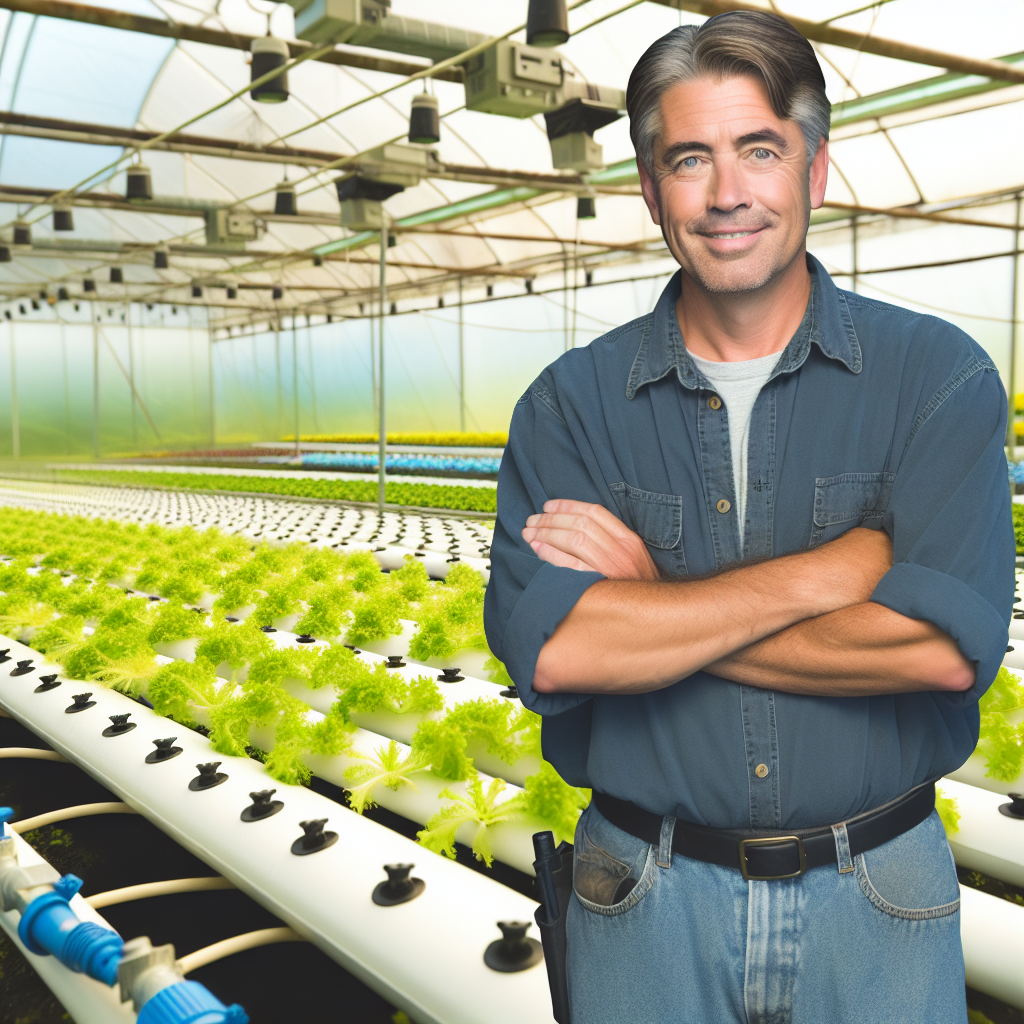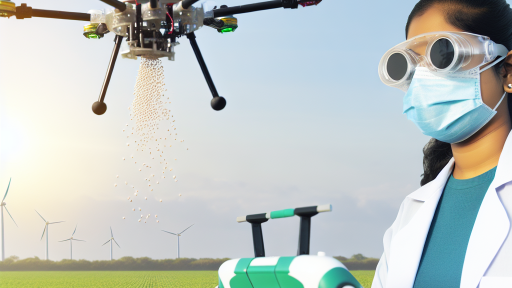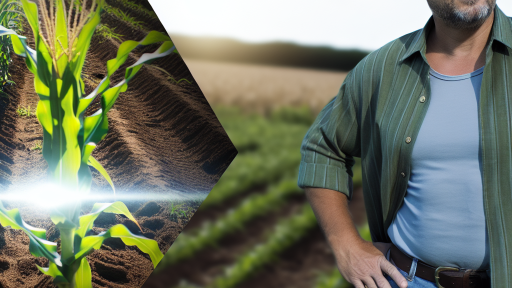Understanding Controlled Environment Agriculture (CEA)
Definition of Controlled Environment Agriculture
Controlled Environment Agriculture refers to indoor farming practices.
It utilizes technology to optimize growing conditions.
This method enhances plant growth efficiency.
Key Concepts in CEA
CEA emphasizes the control of environmental factors.
These factors include temperature, humidity, light, and nutrients.
By managing these, farmers can enhance crop yields.
Technologies Used in CEA
Certain technologies play a crucial role in CEA.
Hydroponics allows plants to grow without soil.
Aeroponics delivers nutrients in mist form.
Additionally, aquaponics combines fish farming with plant cultivation.
Benefits of CEA
Controlled Environment Agriculture offers several advantages.
It enables year-round production, regardless of climate.
This approach reduces the need for pesticides.
Moreover, it conserves water resources significantly.
Challenges Faced by Farmers in CEA
Despite its benefits, CEA presents challenges.
Transform Your Agribusiness
Unlock your farm's potential with expert advice tailored to your needs. Get actionable steps that drive real results.
Get StartedHigh initial setup costs can deter farmers.
Furthermore, technical expertise is often required.
Economic Considerations
The economics of CEA can be complex.
Operational costs may exceed traditional farming.
However, higher crop prices can offset these costs.
Need for Research and Development
Research plays a vital role in advancing CEA.
Investments in technology can lead to innovation.
Moreover, ongoing education is essential for farmers.
Identifying Major Challenges Faced by Farmers in CEA Systems
Initial Investment Costs
Controlled Environment Agriculture often requires significant initial investments.
Many farmers struggle to secure funding for advanced setups.
Costs include technology, equipment, and infrastructure.
These expenses can deter new entrants into the market.
Farmers must strategize on financing options effectively.
Technical Expertise
Implementing CEA requires specialized knowledge and skills.
Farmers may lack the technical expertise needed for operation.
Training programs and workshops can facilitate skill development.
Additionally, mentorship can bridge the knowledge gap.
Access to expert advice can greatly enhance operational efficiency.
Regulatory Compliance
Navigating regulations can be a significant hurdle for farmers.
Compliance with local and national standards is essential.
Regulations may vary significantly from one area to another.
Farmers need to stay informed about legal requirements regularly.
Failure to comply can result in penalties and setbacks.
Resource Management
Efficient resource management is crucial in CEA systems.
Showcase Your Farming Business
Publish your professional farming services profile on our blog for a one-time fee of $200 and reach a dedicated audience of farmers and agribusiness owners.
Publish Your ProfileFarmers often face difficulties in optimizing energy usage.
Water management is another critical aspect to consider.
Effective recycling of nutrients can enhance sustainability.
Farmers can adopt technologies that monitor resource consumption.
Pest and Disease Control
Pest and disease management presents ongoing challenges.
Controlled environments can still fall victim to outbreaks.
Farmers must implement integrated pest management strategies.
Regular monitoring and quick response are essential for success.
Utilizing biologically-based control methods can reduce risks.
Market Competition
The CEA market is becoming increasingly competitive.
Farmers must differentiate their products to attract buyers.
Establishing quality branding can enhance market position.
Networking with local businesses can open new opportunities.
Understanding market trends is key to adapting strategies.
Strategies for Managing Environmental Conditions
Temperature Control
Maintaining optimal temperature is crucial for plant growth.
Farmers can use thermostats to monitor conditions closely.
Heating systems may be necessary in colder months.
Cooling systems, such as fans or misting, help mitigate heat stress.
Additionally, proper insulation can reduce energy costs.
Humidity Regulation
Humidity affects both plant health and disease prevalence.
Farmers can use humidifiers to increase moisture in drier environments.
Dehumidifiers help prevent mold and mildew growth.
Routine monitoring is essential for maintaining proper humidity levels.
Using hygrometers allows for accurate readings and adjustments.
Light Management
Light plays a significant role in photosynthesis.
Farmers should utilize full-spectrum LED lights for indoor farms.
Adjusting light duration can simulate seasonal changes for crops.
Reflective materials can enhance light distribution within a space.
Moreover, automated lighting systems can optimize energy consumption.
Integrating Environmental Controls
Combining temperature, humidity, and light controls is essential.
Farmers can implement smart systems that automate these adjustments.
Data-driven decisions improve overall crop yield and quality.
Regular maintenance of equipment ensures reliability and efficiency.
Working with specialists can enhance system setup and operation.
Find Out More: How Digital Finance Enhances Agricultural Operations Efficiency
Integrating Technology: Automation and Data Monitoring in CEA
Importance of Automation
Automation simplifies repetitive tasks in controlled environment agriculture.
This technology enhances efficiency and reduces labor costs.
Additionally, automation improves consistency in plant growth.
Farmers can focus on strategic decisions rather than daily operations.
Data Monitoring and Analysis
Data monitoring provides real-time insights into crop conditions.
Showcase Your Farming Business
Publish your professional farming services profile on our blog for a one-time fee of $200 and reach a dedicated audience of farmers and agribusiness owners.
Publish Your ProfileEffective monitoring can help optimize resource usage.
Farmers can analyze data to make informed decisions.
This approach leads to enhanced crop yield and quality.
Integrating Sensors and IoT
Sensors play a crucial role in monitoring environmental conditions.
They provide valuable data on temperature, humidity, and soil moisture.
IoT technology connects various sensors for seamless data collection.
This integration allows for automated adjustments based on real-time data.
Case Studies of Successful Implementation
One notable example is GreenTech Farms in California.
They use automated systems to manage nutrient delivery.
As a result, their crop yields increased by 30% within a year.
Similarly, EcoGarden Innovations successfully integrated smart sensors.
Their data-driven decisions improved pest management efficiency.
Challenges and Solutions
Adapting to new technologies can be daunting for some farmers.
However, training and support can ease this transition.
Moreover, high initial costs may deter some from adopting automation.
Financial assistance programs can help mitigate this barrier.
Future Trends
As technology advances, automation will become more accessible.
New innovations will continue to emerge in data monitoring tools.
These developments promise to enhance sustainability in agriculture.
Farmers willing to embrace change will lead the way in this evolution.
Discover More: AI Solutions For Pest And Disease Management
Sustainable Practices: Reducing Energy Consumption in Controlled Environments
Importance of Energy Efficiency
Energy efficiency is vital in controlled environment agriculture.
It helps reduce operational costs for farmers.
Moreover, it decreases the carbon footprint of agricultural practices.
Implementing Renewable Energy Sources
Farmers can benefit from integrating renewable energy solutions.
Solar panels can significantly offset energy expenses.
Wind turbines also present a viable alternative in some regions.
These sources offer sustainable energy solutions for daily operations.
Utilizing Smart Technology
Smart technology enhances energy management in farms.
Automated systems can optimize lighting, heating, and cooling.
This technology reduces energy waste effectively.
For instance, adjustable LED lights promote optimal plant growth.
Insulation and Temperature Control
Effective insulation plays a crucial role in energy reduction.
Properly insulated structures minimize heating and cooling needs.
Farmers can also implement evaporative cooling systems.
These systems maintain ideal temperatures while using less energy.
Water Conservation Techniques
Water conservation directly impacts energy usage in agriculture.
Drip irrigation systems can optimize water delivery to plants.
This method reduces both water and energy consumption.
Rainwater harvesting systems can supplement water needs efficiently.
Showcase Your Farming Business
Publish your professional farming services profile on our blog for a one-time fee of $200 and reach a dedicated audience of farmers and agribusiness owners.
Publish Your ProfileTraining and Education
Ongoing education is essential for farmers.
Workshops on sustainable practices can enhance knowledge.
Farmers can share successful strategies with each other.
Network and community support also foster innovation.
You Might Also Like: The Future Of Precision Farming Through Biotechnology
Combatting Pests and Diseases: Best Practices for Plant Health in CEA
Understanding Pests and Diseases
Pests and diseases pose significant threats in controlled environment agriculture.
Farmers must identify potential issues early to mitigate risks.
Regular monitoring helps in recognizing pest infestations and disease symptoms.
Knowledge of common pests and diseases is crucial for effective management.
Integrated Pest Management Strategies
Integrating various control methods enhances pest management in CEA.
Biological controls involve using beneficial organisms to combat pests.
Cultural practices, like crop rotation, reduce pest populations effectively.
Physical barriers, such as nets, protect plants from certain pests.
Additionally, chemical controls should be used judiciously as a last resort.
Monitoring and Identification Techniques
Utilizing traps aids in early detection of pests.
Regular inspections of plants help in spotting abnormalities.
Established thresholds guide intervention timing during infestations.
Using technology, such as apps and drones, can improve monitoring efficiency.
Enhancing Plant Resilience
Selecting disease-resistant plant varieties strengthens overall health.
Proper nutrition enhances plants’ defense mechanisms against stress.
Implementing appropriate watering practices is vital for plant vigor.
Furthermore, maintaining optimal environmental conditions supports robust growth.
Education and Training
Continuous education empowers farmers to adopt best practices.
Participating in workshops and seminars enhances knowledge of pest management.
Networking with other farmers fosters the exchange of experiences and solutions.
Resources from agricultural extension services can provide essential insights.
Uncover the Details: Blockchain Technology And Its Impact On Farming Supply Chains

Economic Considerations
Cost-Benefit Analysis of CEA Implementation
Controlled Environment Agriculture (CEA) presents unique economic opportunities for farmers.
However, it also entails significant costs that require careful analysis.
Understanding the financial implications is crucial before implementation.
A cost-benefit analysis allows farmers to evaluate their potential investment.
This analysis should include initial setup costs, operational expenses, and ongoing maintenance.
Furthermore, farmers must consider energy consumption and resource efficiency.
These factors can significantly impact overall profitability.
Initial Investment Considerations
The costs of establishing a CEA facility can be substantial.
Growing structures, climate control systems, and technology integration require upfront capital.
Farmers should research various setups and technologies available in the market.
Additionally, seeking government grants may alleviate some financial burdens.
Operational Costs
In addition to initial investments, operational costs play a critical role.
Factors such as labor, water, and electricity usage must be calculated.
Showcase Your Farming Business
Publish your professional farming services profile on our blog for a one-time fee of $200 and reach a dedicated audience of farmers and agribusiness owners.
Publish Your ProfileFarmers should monitor these expenses closely to ensure sustainability.
Also, understanding crop yields and product pricing is essential for forecasting revenue.
Revenue and Profit Margins
CEA can lead to higher crop yields throughout the year.
However, realizing these benefits depends on effective market strategies.
Establishing relationships with local markets can enhance profit margins.
Effective pricing strategies further maximize returns on investment.
Long-Term Financial Sustainability
Financial sustainability is vital for ongoing CEA operations.
Farmers must continuously evaluate their business models for adaptability.
Adopting innovative practices can lead to cost savings over time.
Moreover, investing in education and training ensures effective management.
Ultimately, understanding economic considerations helps farmers thrive in a CEA environment.
Regulatory Compliance
Understanding the Importance of Compliance
Regulatory compliance shapes the agricultural landscape significantly.
Farmers must understand these regulations to operate effectively.
Such compliance ensures food safety and environmental protection.
Moreover, it helps avoid legal issues and fines.
Staying compliant bolsters public trust in agricultural practices.
Navigating Legal Standards
Legal standards vary across regions and types of agriculture.
Farmers must stay informed about local, state, and federal laws.
Regular consultations with legal experts are beneficial.
Industry associations often provide valuable resources.
Furthermore, attending relevant workshops can enhance understanding.
Practicing Safety Standards
Maintaining safety standards is crucial for agricultural operations.
Farmers should implement safety protocols on their farms.
Personal protective equipment (PPE) is essential for all workers.
Regular training sessions ensure everyone understands safety measures.
Compliance with safety standards reduces workplace accidents.
Common Challenges in Compliance
Farmers encounter various challenges in regulatory compliance.
Conflicting regulations can create confusion and inefficiency.
Lack of resources often hampers adherence to legal standards.
Moreover, staying updated on changing regulations proves difficult.
Networking with fellow farmers can help share best practices.
Tools and Resources for Farmers
Numerous tools assist farmers in achieving compliance.
Compliance management software streamlines tracking and reporting.
Online platforms offer training materials on regulations.
Accessing databases for regulatory updates can prove invaluable.
Utilizing available resources reduces the risk of non-compliance.
Future Trends in Controlled Environment Agriculture
Emerging Innovations
Controlled environment agriculture (CEA) rapidly evolves through innovative technologies.
Vertical farming continues to gain attention for its space efficiency.
Alongside this, advanced hydroponics and aquaponics systems enhance crop production.
Automation through artificial intelligence improves labor efficiency in CEA.
Showcase Your Farming Business
Publish your professional farming services profile on our blog for a one-time fee of $200 and reach a dedicated audience of farmers and agribusiness owners.
Publish Your ProfileFurthermore, robotics aid in various agricultural tasks like planting and harvesting.
Opportunity for Sustainability
Sustainability emerges as a key focus in future CEA trends.
Utilizing renewable energy sources greatly reduces overall environmental impact.
Integrating smart systems optimizes resource usage, including water and nutrients.
Additionally, sustainable practices contribute to higher product quality.
Market Demand and Consumer Trends
Consumer interest in locally sourced food drives demand for CEA products.
As urban areas grow, sourcing food locally becomes increasingly vital.
This trend significantly impacts product distribution channels.
Moreover, the demand for organic and pesticide-free produce continues to rise.
Collaboration and Investment
Collaboration among CEA firms boosts technological advancements.
Partnerships with research institutions promote innovation and knowledge sharing.
Investors are increasingly interested in supporting sustainable agricultural ventures.
This influx of investment fosters the growth of startups in the CEA sector.
Global Expansion Opportunities
Controlled environment agriculture holds global expansion potential.
Regions with challenging climates can benefit significantly from CEA methods.
Implementing these practices can ensure food security in vulnerable areas.
Additionally, CEA can adapt to local preferences and enhance community engagement.
Additional Resources
Indoor Farming Market Size, Share, Growth Report, 2030
Economic Viability of Vertical Farming: Overcoming financial …




